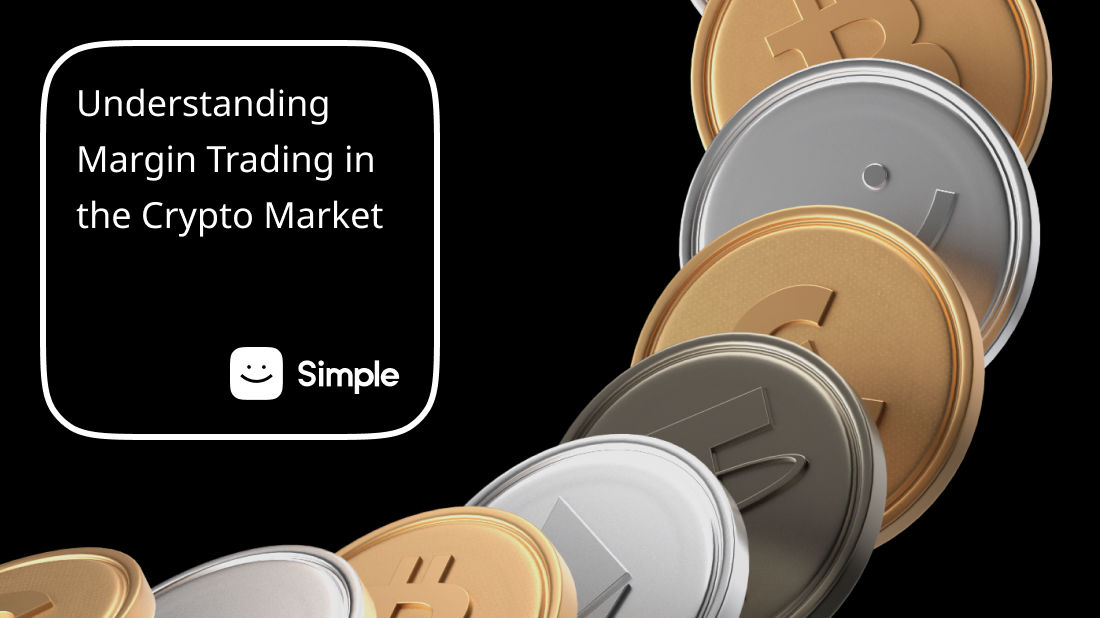Understanding Margin Trading in the Crypto Market

Margin trading in the cryptocurrency market has gained immense popularity due to its potential to amplify profits. However, it also comes with significant risks that every trader should understand. This article delves into the concept of margin trading, explores its benefits and risks, and provides best practices for those looking to engage in leverage trading in the cryptocurrency market.
What is Margin Trading?
Basic Concept
Margin trading involves borrowing funds from a broker or exchange to trade cryptocurrencies. This allows traders to enter positions larger than their capital, thereby amplifying potential profits. The borrowed funds are typically secured by the trader's initial investment, known as the margin.
Leverage
A crucial component of margin trading is leverage, which is expressed as a ratio (e.g., 2:1, 5:1, or even 100:1). Leverage determines the amount of borrowed funds relative to the trader's own capital. For instance, with 5:1 leverage, a trader with $1,000 can trade $5,000 worth of cryptocurrency.
Benefits of Margin Trading
Amplified Profits
The primary advantage of margin trading is the potential for amplified profits. By using leverage, traders can gain exposure to larger positions than they could with their own funds alone. This can lead to significantly higher returns on successful trades.
Diversification
Margin trading allows for greater diversification of trading strategies. Traders can take multiple positions simultaneously, spreading risk across various assets and potentially increasing overall profitability.
Short Selling
Margin trading enables short selling, which involves borrowing an asset to sell it with the intention of buying it back at a lower price. This allows traders to profit from falling prices, offering opportunities in both bull and bear markets.
Risks of Margin Trading
Increased Losses
While leverage can amplify profits, it can also magnify losses. If the market moves against a trader's position, losses can exceed the initial investment, potentially leading to substantial financial losses.
Liquidation
If the value of a trader's position falls below a certain threshold, the broker or exchange may issue a margin call, requiring additional funds to maintain the position. If the trader cannot meet the margin call, the position may be liquidated to cover the borrowed funds, resulting in a total loss of the initial investment.
High Volatility
The cryptocurrency market is known for its high volatility, which can lead to rapid and unpredictable price movements. This volatility increases the risk of margin trading, as sudden market swings can quickly turn profitable positions into losing ones.
Interest and Fees
Borrowing funds for margin trading incurs interest and fees, which can erode profits over time. Traders must account for these costs when calculating potential returns and should be aware of the terms and conditions set by their broker or exchange.
Best Practices for Margin Trading
Education and Research
Before engaging in margin trading, it is crucial to have a solid understanding of the market and the specific cryptocurrency being traded. Conduct thorough research, stay updated on market trends, and familiarize yourself with technical analysis.
Start Small
Begin with small positions to gain experience and understand the mechanics of margin trading. Gradually increase the size of your positions as you become more comfortable and confident in your trading strategies.
Risk Management
Implement robust risk management strategies to protect your capital. This includes setting stop-loss orders to limit potential losses and using only a small percentage of your total capital for margin trading to mitigate risk.
Leverage Cautiously
Use leverage cautiously and avoid over-leveraging your positions. High leverage can lead to substantial losses, so it is essential to use leverage that aligns with your risk tolerance and trading experience.
Monitor Positions Closely
Margin trading requires constant monitoring of your positions due to the high risk and potential for rapid market movements. Stay vigilant and be prepared to act quickly to adjust or close positions as needed.
Stay Updated
Stay informed about market news and developments that could impact cryptocurrency prices. Market sentiment can change rapidly, and being aware of potential catalysts can help you make informed trading decisions.
Conclusion
Margin trading in the crypto market offers exciting opportunities for amplified profits and diversified trading strategies. However, it also comes with significant risks, including increased losses and the potential for liquidation. By understanding the concept of margin trading, educating yourself, and implementing best practices, you can navigate this high-risk, high-reward landscape more effectively.
As with any form of trading, caution and prudent risk management are essential. Start small, leverage cautiously, and continuously educate yourself to maximize the benefits of margin trading while minimizing its inherent risks. By doing so, you can take advantage of the opportunities in the dynamic and rapidly evolving world of cryptocurrency trading.












